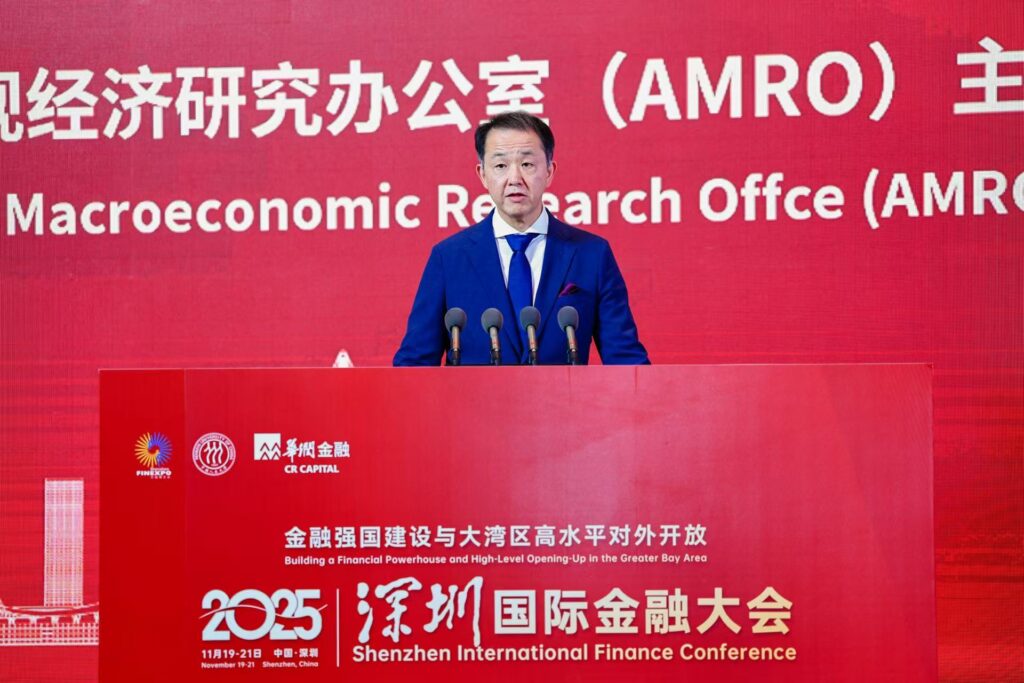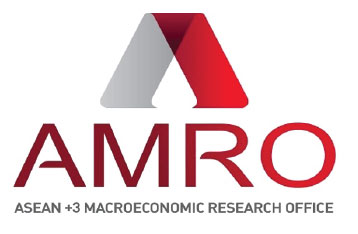
Deepening Financial Cooperation & Integration in the ASEAN+3 Region
Distinguished guests,
Colleagues and friends,
Ladies and gentlemen
It is a great pleasure and honor to join you here in Shenzhen—a city that stands at the forefront of innovation, openness, and connectivity.
The last time I visited Shenzhen was in 1992, more than three decades ago. Returning today, I am deeply impressed by the city’s transformation. What was once a young and aspiring industrial town has become a global center for technology, finance, and innovation—a symbol of China’s reform and opening, and of Asia’s capacity for renewal and growth.
I wish to warmly thank the Shenzhen Municipal Government and Renmin University of China for organizing this important conference. I am also grateful for the invitation for AMRO to join today’s dialogue on financial openness and cross-border cooperation.
This topic is both timely and forward-looking. It raises a central question for our region: How can openness evolve into deeper, more impactful integration that supports sustainable and inclusive growth?
The Greater Bay Area provides the perfect backdrop for this discussion. Its unique combination of finance, technology, and innovation demonstrates how connectivity across borders can generate new engines of growth. In many ways, this city’s experience mirrors the broader ASEAN+3 story—one built on synergy, trust, and shared purpose.
AMRO — A Reflection of Regional Financial Cooperation
AMRO was established to support macroeconomic surveillance and the implementation of the Chiang Mai Initiative Multilateralisation or CMIM—the region’s financial safety net.
Our organization stands as a living embodiment of regional financial cooperation. It reflects the collective determination of ASEAN+3 members to learn from past crises, to institutionalize regional solidarity, and to continually strengthen our capacity to prevent and respond to future shocks.
Headquartered in Singapore, AMRO’s mission is to promote macroeconomic resilience and financial stability through independent surveillance, policy dialogue, and capacity development. It is both a product of, and a platform for, regional cooperation—building bridges among economies, institutions, and policymakers.
The ASEAN+3 Region at a Glance
The ASEAN+3 region is one of the most dynamic and interconnected economic groupings in the world—accounting for more than a quarter of global GDP and trade and contributing a substantial share of global growth.
Our production and trade networks are deeply integrated. China has become both a major supply and demand hub, while Japan and Korea contribute technology and capital that drive innovation. ASEAN, with its youthful population and openness to investment, remains the region’s vibrant growth frontier.
Together, these complementarities have formed a foundation of shared prosperity and resilience.
Entering a Volatile Period from a Position of Strength
Despite global uncertainties from rising tariffs, geopolitical tensions, and financial volatility, ASEAN+3 remains resilient, entering this period from a position of strength anchored by four key pillars:
- First, robust domestic demand. Consumption and investment remain resilient despite external headwinds.
- Second, deepening intra-regional trade. Our regional value chains are expanding and deepening within the region, while remaining open and connected to the wider world.
- Third, sustained FDI inflows. Investment continues to flow into emerging sectors such as digital infrastructure, electronics, and green industries. Firms from the Greater Bay Area are playing a growing role, underscoring the region’s rising significance as a source of capital and innovation.
- And fourth, sound macroeconomic management. Prudent fiscal and monetary policies have preserved stability and policy space.
Together, these strengths have helped ASEAN+3 maintain confidence and resilience amid today’s global headwinds.
Mounting Challenges Ahead
However, the region also faces mounting structural challenges—from demographic aging and climate change to rapid technological transformation.
To sustain prosperity, ASEAN+3 must unlock new sources of productivity and growth. Financial cooperation and integration will be crucial to this next stage of transformation.
Unlocking Future Growth through Financial Cooperation and Integration
ASEAN+3 remains one of the world’s most attractive destinations for foreign direct investment. Even amid global fragmentation, capital inflows have been remarkably resilient, reflecting the region’s central role in global value chains.
What is particularly noteworthy is the rise of intra-regional investment.
Nearly 40 percent of total FDI in ASEAN+3 now originates within the region itself—a sign of deepening financial interdependence.
While Japan and Korea have long anchored investment flows, China has emerged as a valuable new source of capital—especially in digital infrastructure, logistics, renewable energy, and advanced manufacturing.
The growing flow of investment between ASEAN and its northern neighbors has become one of the most dynamic developments in the region, blending technological and financial strengths with ASEAN’s demographic advantages and expanding markets.
Yet, significant opportunities remain untapped. Deepening these investment and production linkages could unlock new potential in infrastructure, innovation, and the green transition—while also diversifying supply chains and strengthening regional resilience.
At the same time, intra-ASEAN financial integration remains limited. Cross-border investment within ASEAN accounts for only about 10% of total inflows, well below trade integration levels. Building stronger regional banking networks, capital markets, and infrastructure funds will enable ASEAN to mobilize its own savings to finance growth.
In parallel, expanding services trade and innovation-driven investment will define the next phase. Services still account for less than one-fifth of ASEAN+3 exports—revealing significant untapped potential. Aligning financial integration with innovation capacity will help ASEAN+3 evolve into a more knowledge-based and financially integrated economy.
A more connected corridor with ASEAN, together with stronger intra-ASEAN linkages, can form a self-sustaining investment ecosystem, reinforcing trade, productivity, and technology diffusion.
From Openness to Impactful Integration
Over the past two decades, ASEAN+3 has demonstrated the value of cooperation and solidarity. Institutions such as AMRO, together with mechanisms like the CMIM, have translated this spirit into a lasting framework for regional financial stability.
But openness alone will not be enough. The next stage must focus on impactful integration—one that delivers tangible benefits to people, businesses, and economies. One that reinforces the region’s collective strength.
Allow me to highlight four key messages:
- First, move from openness to impactful integration. We need to align trade, investment, and finance so they reinforce one another and deliver real outcomes.
- Second, deepen financial cooperation. Finance will be the key enabler for the next stage of regional integration.
- Third, strengthen connectivity and trust. This means building open markets, robust financial infrastructure, and enduring partnerships.
- And fourth, AMRO’s commitment. We will continue to support this journey through independent surveillance, policy dialogue, and capacity building, helping ASEAN+3 become a model of financial resilience and shared prosperity.
A more impactfully integrated ASEAN+3 will not only enhance regional stability but also act as a vital anchor for global balance and cooperation.
If the last decade was about building resilience, the next decade must be about transformation—from openness to connectivity, and from regional strength to global impact.
As I shared during the recent ASEAN+3 Summit: “The next phase of regional integration must go beyond trade. It is time to deepen investment and financial linkages—linkages that reinforce one another and lift productivity across ASEAN+3.”
The Greater Bay Area—with its innovative spirit and deep financial networks—will play a significant role in this transformation, connecting capital and creativity among ASEAN+3, and with the world.
Let’s work together—governments, central banks, and the financial sector–to build a more connected, more resilient ASEAN+3, one that supports both regional and global stability and prosperity.
From open markets to connected opportunities,
From individual progress to collective strength,
And from regional resilience to global impact—
This is the path toward a sustainable and prosperous future for all.
Thank you!
